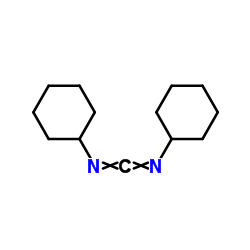| 结构式 | 名称/CAS号 | 全部文献 |
|---|---|---|
 |
BOC-甘氨酸
CAS:4530-20-5 |
|
 |
胆固醇
CAS:57-88-5 |
|
 |
苯并三氮唑-N,N,N',N'-四甲基脲六氟磷酸酯
CAS:94790-37-1 |
|
 |
N,N'-二环己基碳酰亚胺
CAS:538-75-0 |